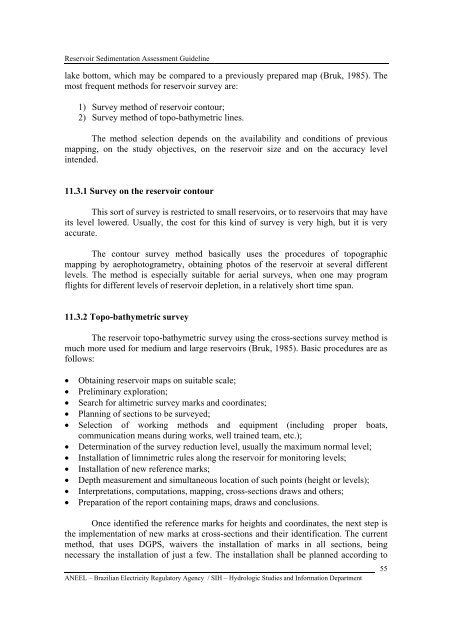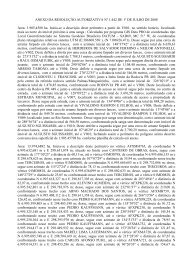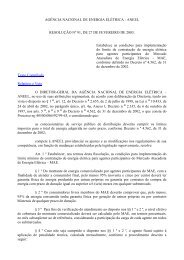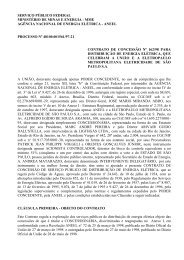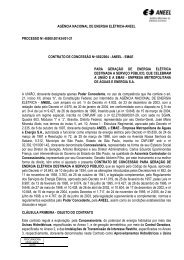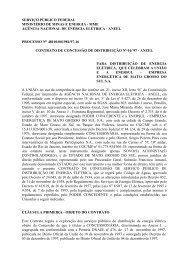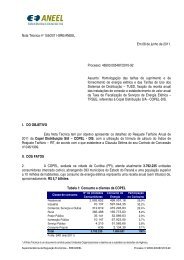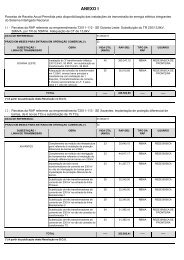RESERVOIR SEDIMENTATION ASSESSMENT GUIDELINE - Aneel
RESERVOIR SEDIMENTATION ASSESSMENT GUIDELINE - Aneel
RESERVOIR SEDIMENTATION ASSESSMENT GUIDELINE - Aneel
Create successful ePaper yourself
Turn your PDF publications into a flip-book with our unique Google optimized e-Paper software.
Reservoir Sedimentation Assessment Guidelinelake bottom, which may be compared to a previously prepared map (Bruk, 1985). Themost frequent methods for reservoir survey are:1) Survey method of reservoir contour;2) Survey method of topo-bathymetric lines.The method selection depends on the availability and conditions of previousmapping, on the study objectives, on the reservoir size and on the accuracy levelintended.11.3.1 Survey on the reservoir contourThis sort of survey is restricted to small reservoirs, or to reservoirs that may haveits level lowered. Usually, the cost for this kind of survey is very high, but it is veryaccurate.The contour survey method basically uses the procedures of topographicmapping by aerophotogrametry, obtaining photos of the reservoir at several differentlevels. The method is especially suitable for aerial surveys, when one may programflights for different levels of reservoir depletion, in a relatively short time span.11.3.2 Topo-bathymetric surveyThe reservoir topo-bathymetric survey using the cross-sections survey method ismuch more used for medium and large reservoirs (Bruk, 1985). Basic procedures are asfollows:• Obtaining reservoir maps on suitable scale;• Preliminary exploration;• Search for altimetric survey marks and coordinates;• Planning of sections to be surveyed;• Selection of working methods and equipment (including proper boats,communication means during works, well trained team, etc.);• Determination of the survey reduction level, usually the maximum normal level;• Installation of limnimetric rules along the reservoir for monitoring levels;• Installation of new reference marks;• Depth measurement and simultaneous location of such points (height or levels);• Interpretations, computations, mapping, cross-sections draws and others;• Preparation of the report containing maps, draws and conclusions.Once identified the reference marks for heights and coordinates, the next step isthe implementation of new marks at cross-sections and their identification. The currentmethod, that uses DGPS, waivers the installation of marks in all sections, beingnecessary the installation of just a few. The installation shall be planned according toANEEL – Brazilian Electricity Regulatory Agency / SIH – Hydrologic Studies and Information Department55


